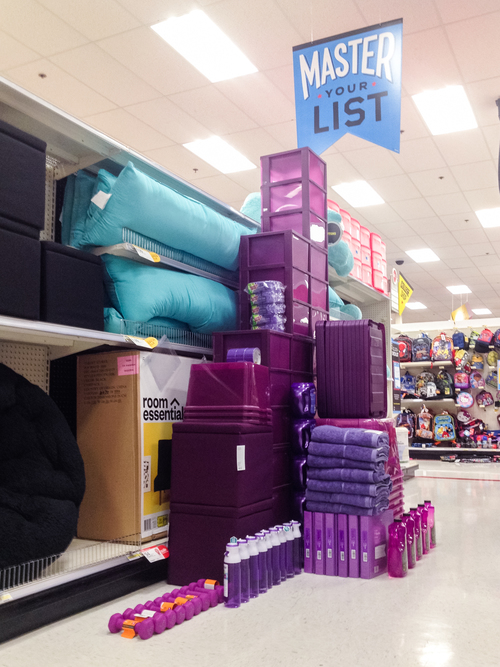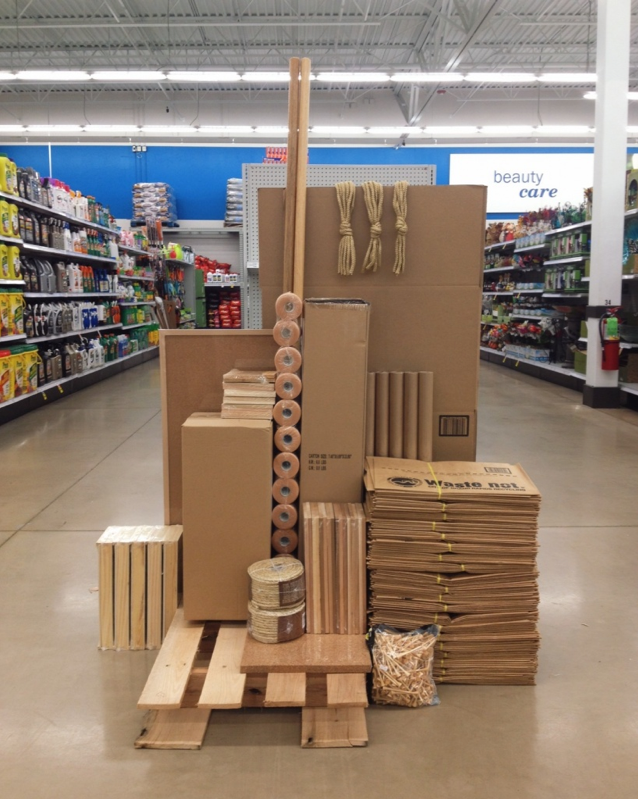Anti-Retail Therapy
For several months this fall, Carson Davis Brown illicitly created and exhibited arresting, monochromatic assemblages in big-box retailers around the Upper Midwest, using only materials found in-store for his installations.
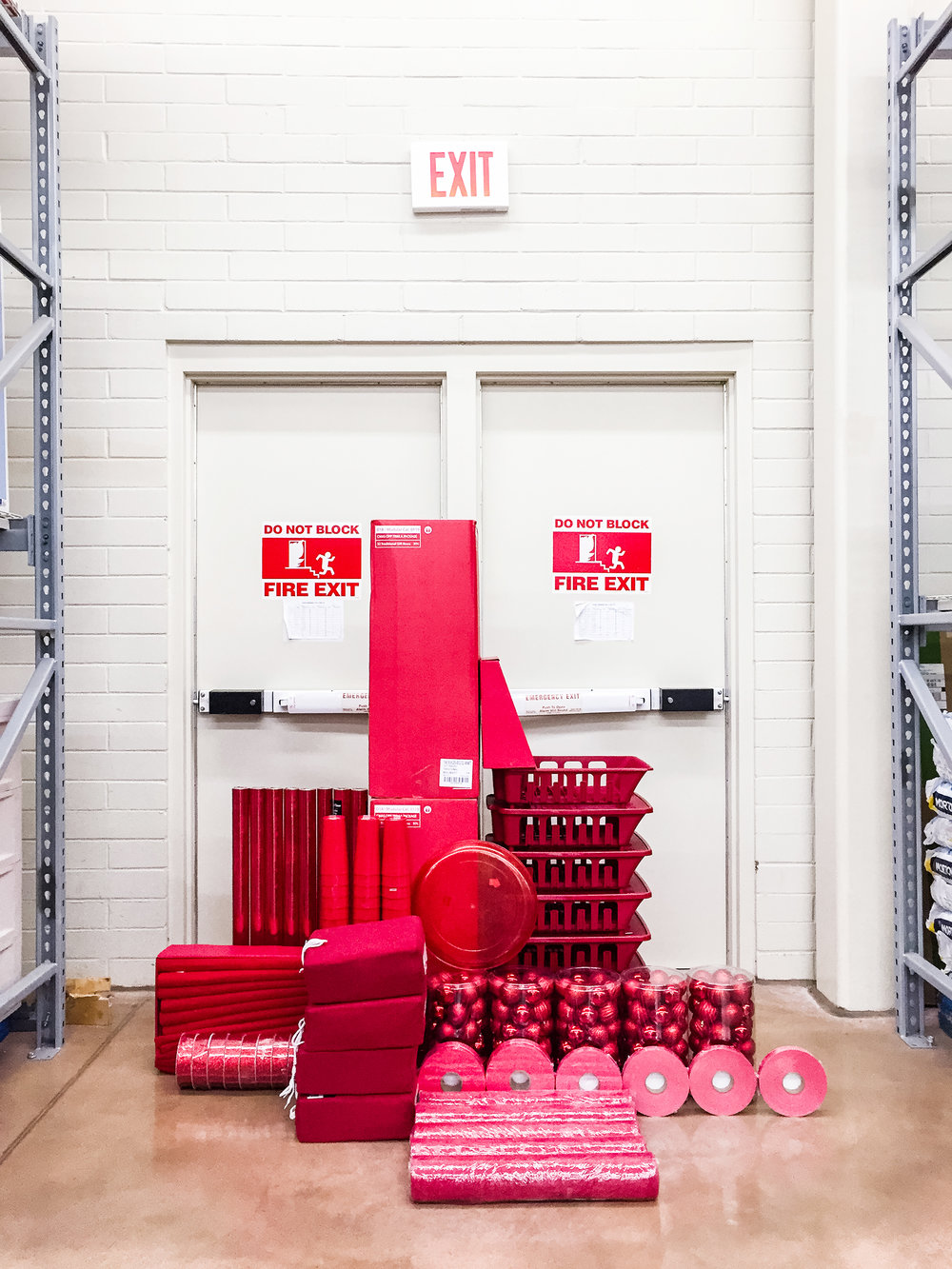
Just after noon on Saturday, November 8, a cohort of the Grand Rapids art scene a few dozen strong convened in a suburban supermarket. As they trickled in, the group bypassed the produce and the pharmacy and went straight to the home goods section. But they were not there to shop. Their attention was drawn to an aisle containing several shelves filled with stacks of cheap frames. Instead of the typical repeated stock portrait, the frames each contained unique photographs by Carson Davis Brown, an award-winning photographer and filmmaker. Brown stood nervously by as the guests admired his photos and chatted. After about 30 minutes, the crowd collectively decided to pick out their favorites and take them to the register, paying for the frames and, by default, the photographs illicitly placed inside.
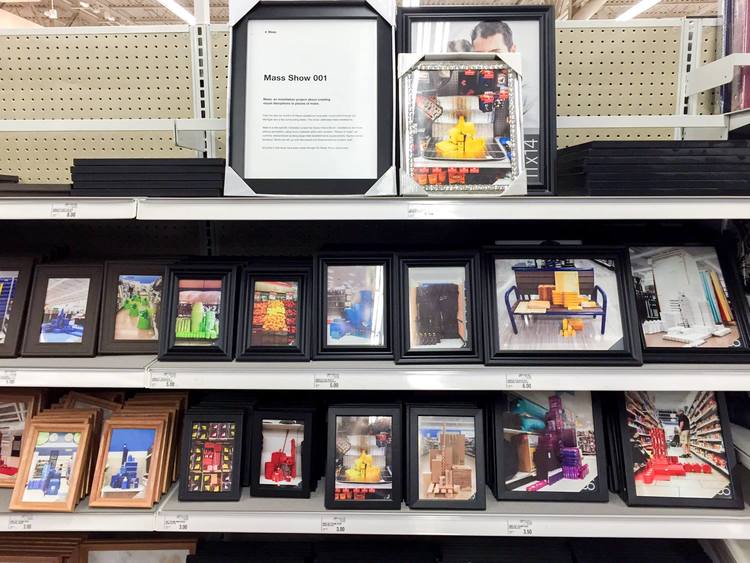
This brief and possibly illegal exhibition was titled #_Mass. It was an unauthorized showing of a body of work that Brown produced in a similarly unauthorized way. For several months, Brown created assemblage sculptures inside of big-box retail stores, using only products found in each store. The constructs usually featured a variety of objects of a single color, stacked and arranged into orderly and imposing totems. The finished pieces appear as monochromatic bursts, disrupting the visual rhythm of retail shelving. He produces these sculptures in the store without permission, and without purchasing any of the material. The assemblages are made, photographed, then left to be experienced by passersby and ultimately disassembled by the store’s employees.
Are Brown’s sculptures built as props for the photographs, or do the photographs serve as documentation of his intervention? It’s not clear. Either way, the curious, uncanny photographs are all that’s left of his illicit installations. Brown’s presentation of these photos online is clean and straightforward, like the presentation of all his other photographic work. To show prints of the photos, however, Brown conceived of #_Mass as a happening that might echo the circumstances of the photos themselves. And as we viewed his work last month in that supermarket, we looked over our shoulders to see if the whole thing would be shut down by an irate manager. We felt something of what Brown must have felt when he was quickly and discreetly making and photographing his assemblages. The mischievousness behind the work’s making carried through to the viewing.
Brown’s assemblages and the resulting photos are handsome and simple, which amplifies the complexities that surround their creation. Like any good prank, they expose mores and power structures by playfully disrupting them. Supermarkets and other big-box retailers are ubiquitous, mundane environments, common settings in most of our lives. That’s particularly true in a mid-size city like Grand Rapids, where groceries and hardware are hard to find downtown, but suburban supercenters are just a 20-minute drive from the city’s core. We visit these places so often, it’s easy to forget how politically, socially, and aesthetically charged they are. Superstores are designed to be pleasant, but they’re never neutral. Cutthroat competition leads to meager wages and labor disputes. Supermarket shelves are the tidy terminus of a bafflingly complex — and sometimes terrifying — system of industrial agriculture. Shelf layouts are designed, tested, and redesigned. The sea of similar products in a given aisle represents a packaging design battle for brand survival, each tiny image vying for shoppers’ attention. Brown doesn’t take on these topics explicitly, and he doesn’t need to. Simply by disrupting and repurposing retail space, he cracks the veneer that normally hides the corporate machinations animating these carefully orchestrated spaces.
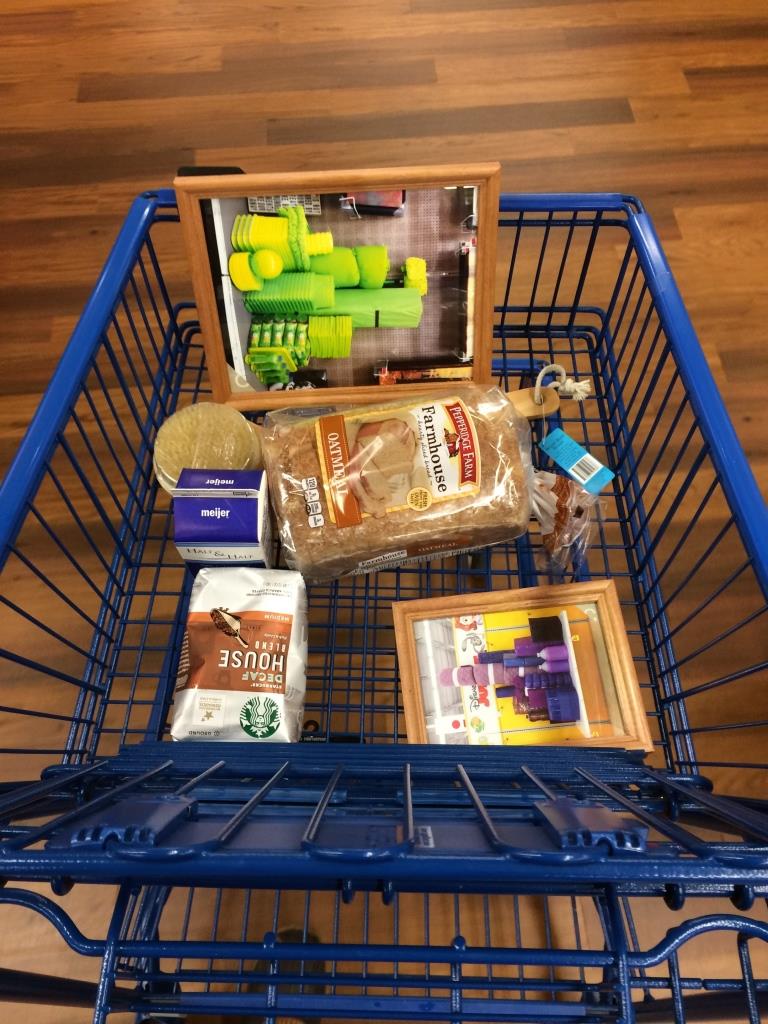
In the everyday exchange of money for goods, retail spaces are a liminal zone in both space and time. The space itself is quasi-public, in the sense that anyone can enter freely, but it is also private property. When you’re walking around a store, do you own what’s in your shopping cart? No, but you will soon, so you begin to treat is as your property. The products you collect exist in two states at once — they’re both yours and not-yet-yours. What can be done with these objects you almost own? What can be done in this space that is almost public? Brown, like all good artists, raises such questions through testing, playing, and making. The Mass works negotiate that border between public and private by entering the in-between and challenging private interest to draw a hard line. Surprisingly, at least during his ad hoc show of photographs, the establishment seemed uninterested in intervening. It’s not clear if they were even aware anything unusual was happening.
When the assembled crowd left to pay for the frames containing the photos, the strange economics of the situation suddenly became clear. Brown paid to have the photos printed (at the photo department of the Meijer store we were in, naturally), but he was receiving no payment when attendees purchased the frames holding them. The store, on the other hand, seemed to have an unusually good day for frame sales. What if Brown approached Meijer and collaborated on the next iteration of the project? The store would benefit from hip niche marketing, and the artist would get paid. While this arrangement might look similar on the surface, I’m not being hyperbolic when I suggest that repurposing #_Mass as a marketing gimmick would completely destroy it. The project requires creation in that uneasy gap between permission and prohibition. The assemblages and resulting photos, beautiful as they are, gain their charge by virtue of the mischief in their making. To work, these pieces must be disruptive and unsanctioned.
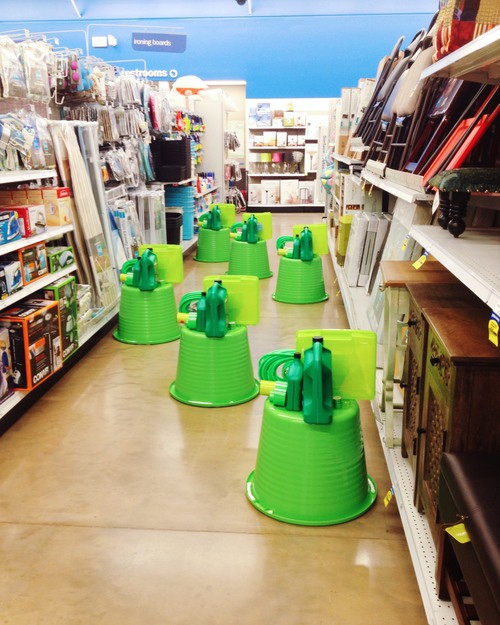
Marketers frame the act of purchasing a product as a declaration of self. We’re invited to create ourselves in the eyes of others through our public consumption. This is an illusion, of course, but so pervasive that even those of us who can see through it concede to participate. After all, we have to buy things. And those things send signals to others, even if we don’t want them to. In the face of this, Brown offers neither militant resistance nor an escapist utopia. Instead, he invites us to join him in playfully reclaiming what marketers would supplant: the unique power of making something. Making, not buying, is a way of signaling who we really are. Brown picks up things he’s not going to purchase, claims space he has no right to alter, and then he builds something.
Find photos, related media and more on the #_Mass series of illicit exhibitions on the project’s website. For more on the artist, visit www.carsondavisbrown.com.

